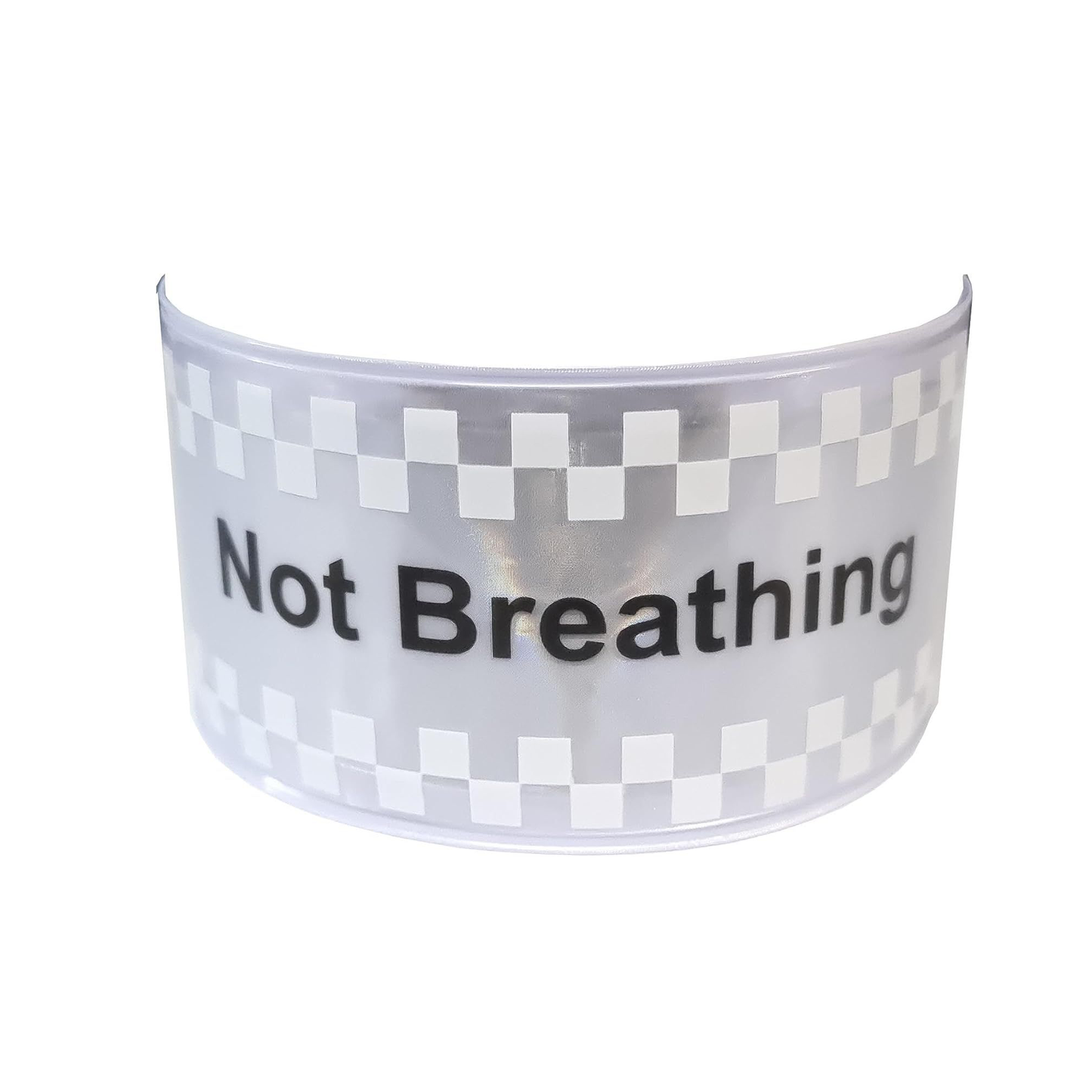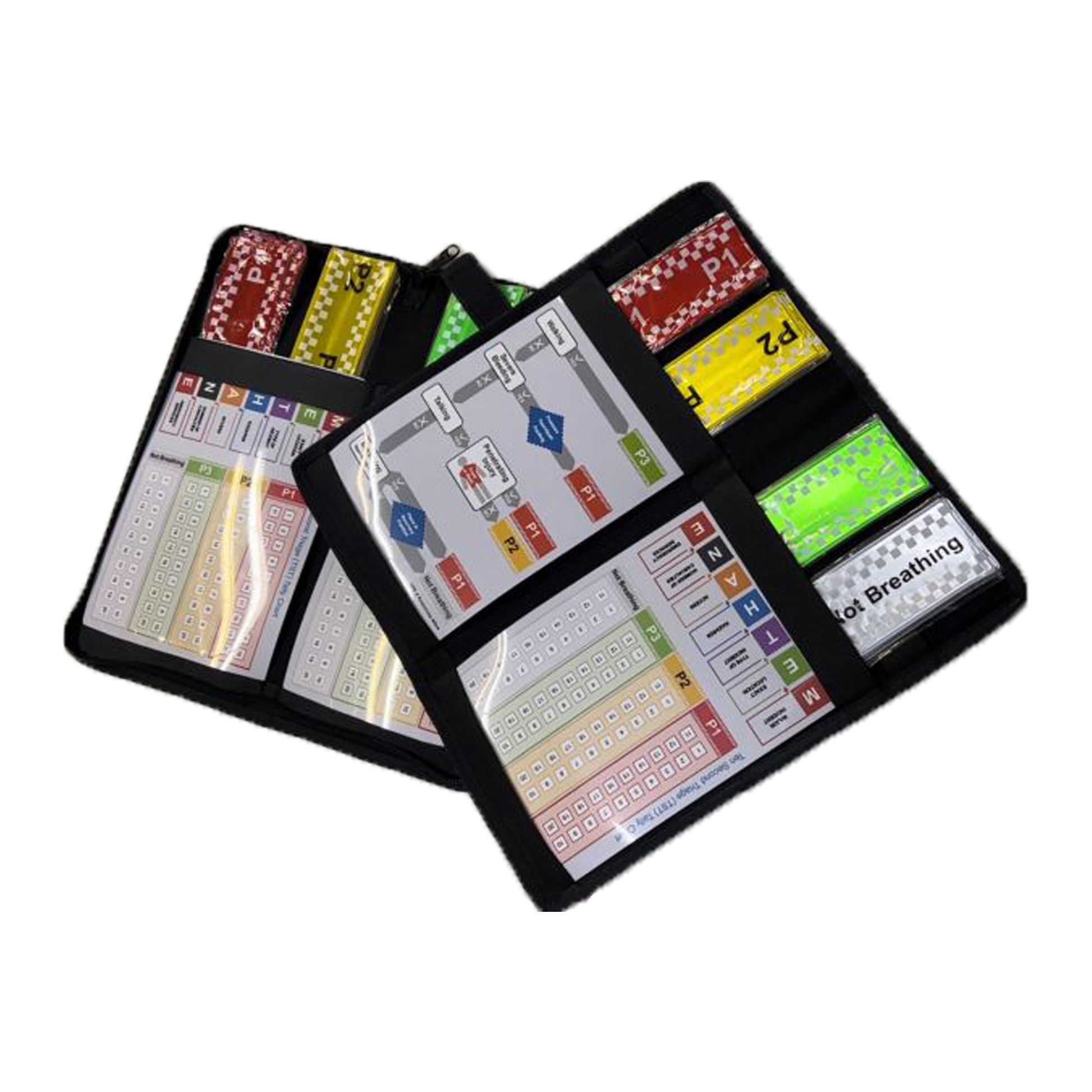










NHS Ten Second Triage (TST) Slap Band Pack. This pack contains 20 ready to use slap bands for rapid casualty identification during mass casualty incidents.
The Manchester Arena incident called for different approaches to the management of major incidents involving mass casualties. As a consequence of the findings, the Ten Second Triage (TST) tool has evolved to be used by anyone responding to major incidents providing care to casualties prior to the arrival of the NHS clinical response.
The NHS Ten Second Triage (TST) Slap Band Pack contains:
- x2 Ten Second Triage (TST) cards (fully weatherproof)
- x5 Priority 1 (immediate care) red slap bands
- x5 Priority 2 (urgent care) yellow slap bands
- x5 Priority 3 (delayed care) green slap bands
- x5 Not breathing silver slap bands
- Supplied in a reinforced case with pockets and holding bands
- Secure velcro closure
Designed to assist those first on the scene before clinical first responders arrive on scene and allows for rapid focus based on casualty condition to reduce the care time for the injured to receive treatment.
The front side of the Ten Second Triage (TST) card.
The primary focus of the Ten Second Triage (TST) card is to provide lifesaving interventions immediately. The front side of the card sets out the Ten Second Triage (TST) algorithm and sets to allocate P1, P2, P3 & Not Breathing statuses.
NHS Ten Second Triage (TST) Slap Band Chart:
| Priority level | Colour of band | Description |
| 1 - immediate | Red | Requires lifesaving treatment immediately and has time critical life-threatening injuries |
| 2 - urgent | Yellow |
Requires significant intervention as soon as possible Injured or unwell and are unable to walk |
| 3 - delayed | Green |
Requires medical intervention but not with any urgency Can walk to treatment |
| Not breathing | Silver | Breathing not detected |
The reverse side of the Ten Second Triage (TST) card.
The reverse side of the Ten Second Triage (TST) card sets out the casualty count and METHANE reporting tool, which brings structure and clarity to the initial stages of managing any multi-agency or major incident.
M – Major incident
E – Exact location
T – Type of incident
H – Hazards
A – Access
N – Number of casualties
E – Emergency services
Ten Second Triage (TST) is quick, simple and effective.
The Ten Second Triage (TST) tool is designed to be quick, simple and effective at prioritising large numbers of casualties allowing for rapid focus on providing immediate lifesaving interventions (LSI).
These LSI include control of severe bleeding and opening of the airway, which are known to be the key requirements to maximise patient survival in the early stages of injury.
Use the Ten Second Triage (TST) slap bands together with the Ten Second Triage (TST) chart - click here to view the Ten Second Triage (TST) chart.
Ideal to assist non-medical professionals.
The Ten Second Triage (TST) tool is designed to assist non-medical professionals who are first on the scene at a major incident involving mass casualties. The Ten Second Triage (TST) allows for rapid focus based on casualty condition once the clinical response teams are on scene.
A must have for public services such as the Police and Fire Service. The Ten Second Triage (TST) tool can be used by other emergency response teams such as First Responders, Search & Rescue Teams and the Coastguard.
Key features:
- User-friendly design, ensuring effortless & quick application.
- Compatible with patients wearing thick layers of clothing.
- Simple removal and replacement as and when needed.
- High visibility in all environments and low light.
- Reflective design for enhanced visibility under various lighting conditions (such as torchlight).
- Made to NHS guidance on size and colour (measuring 300mm x 50mm).
- Remarkably cost-effective when compared to other alternatives.
- Durable and suitable for multiple uses, ensuring longevity.
- Conveniently rollable for effortless storage.











